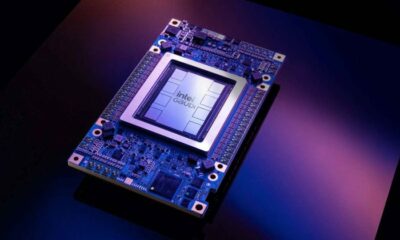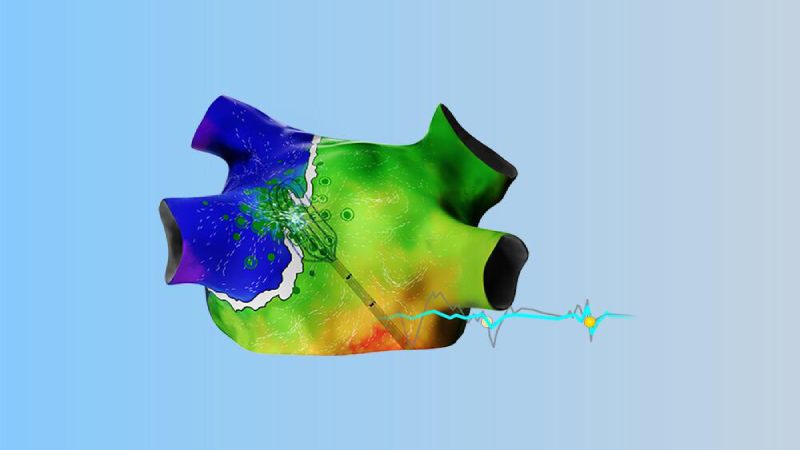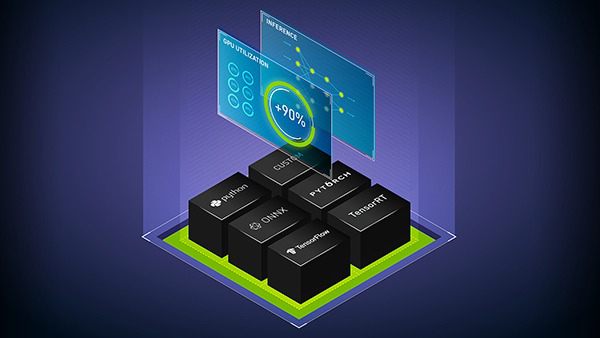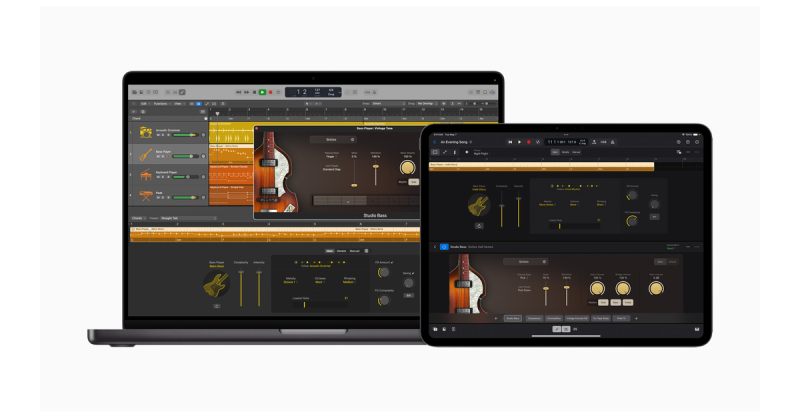Presenting cutting-edge professional experiences for songwriting, beat-making, producing, and mixing, Apple today unveiled the all-new Logic Pro for iPad 2 and Logic Pro for Mac 11. With its amazing studio assistant features, which are powered by artificial intelligence, the new Logic Pro enhances the creative process and helps musicians when they need it, all while preserving their complete creative control.
These features include Session Players, which give Logic Pro’s well-liked Drummer capabilities a new dimension by adding a Bass Player and Keyboard Player; Stem Splitter, which allows you to separate and manipulate different portions of a single audio recording; and ChromaGlow, which instantly adds warmth to tracks. On Monday, May 13, Logic Pro for Mac 11 and Logic Pro for iPad 2 will be made available through the App Store.
According to Brent Chiu-Watson, senior director of Apps Worldwide Product Marketing at Apple, “Logic Pro gives creatives everything they need to write, produce, and mix a great song, and our latest features take that creativity to a whole new level.” “The greatest music creation experience in the industry is offered to creative pros by Logic Pro’s new AI-backed updates and the unmatched performance of iPad, Mac, and M-series Apple silicon.”
AI-Powered Customized Backing Band for Session Players
By giving artists access to a personalized, AI-powered backing band that reacts to their input, Session Players provide ground-breaking experiences.More than ten years ago, Drummer made his debut as one of the world’s first generative musicians, and it quickly took the music creation industry by storm. A new virtual keyboard and bass player, along with other significant improvements, make it even better today. While guaranteeing that musicians have complete control over every stage of the song-writing process, session players enhance the live performance experience.
Bass Player was trained using cutting-edge AI and sampling technologies in conjunction with some of the greatest bass players working today. Eight distinct bass players are available for users to select from, and they can use advanced parameters for slides, mutes, dead notes, and pickup hits in addition to controls for complexity and intensity to steer their performance. Users can choose from 100 Bass Player loops to get fresh ideas, or they can jam along with chord progressions. The virtual bass player will precisely follow along when users define and modify the chord progressions to a song using Chord Track. Users can also access six newly recorded instruments, ranging from electric to acoustic, with the Studio Bass plug-in. These instruments are inspired by the sounds of the most well-liked bass tones and genres of today.
Keyboard Player offers four distinct styles that are specifically tailored to complement a broad range of musical genres and were created in collaboration with professional studio musicians. With almost infinite variations, a keyboard player can play anything from basic block chords to chord voicing with extended harmony. Similar to the Bass Player, the Keyboard Player follows along as the Chord Track adds and modifies the song’s chord progression. Users can choose from a variety of additional sound-shaping options by using the Studio Piano plug-in. These options include adjusting three mic positions, pedal noise, key noise, release samples, and sympathetic resonance.
Stem Splitter: Retrieve Excellent Tapes
Without the pressure of an official studio session, most musicians give their best performances. These moments are frequently found on old demo cassette tapes, Voice Memos recordings, or live show footage. When these recordings are listened to again, they can be seen to have been lost to time—magical performances that are almost impossible to recreate. With Stem Splitter, an artist can now extract inspiration from any audio file and divide almost any mixed audio file into four separate sections, directly on the device: drums, bass, vocals, and other instruments.2. It’s simple to add new sections, alter the mix, or apply effects when these tracks are divided. Stem Splitter operates incredibly quickly thanks to AI and M-series Apple silicon.
ChromaGlow: Set the Ideal Hue
ChromaGlow uses AI and the capability of M-series Apple silicon to simulate the sounds made by a combination of the most renowned studio hardware available.3. With five distinct saturation styles, users can fine-tune the sound to add ultrarealistic warmth, punch, and presence to any track. In addition, they have the option of selecting from more extreme styles that can be tailored to their preferences, nostalgic vintage warmth, or contemporary, clean sounds.
iPad and Mac-Powered
Creatives have embraced Logic Pro for iPad quickly since its launch last year. Logic Pro, which was created from the ground up to fully utilize touch, turns the iPad into practically any instrument that can be imagined. Because of the iPad’s portability, it also becomes a fully functional studio on the go. Musicians can finish intricate multitrack projects, design unique software instrument sounds, use a fully functional professional mixer, and experiment with the app’s extensive effects plug-in library thanks to the strength and performance of Apple silicon.
Project round-tripping makes it simple to work between an iPad and a Mac, enabling users to continue refining their project when they return to the studio and continue making music while on the go.


 Business4 weeks ago
Business4 weeks ago
 Entertainment3 weeks ago
Entertainment3 weeks ago
 Business4 weeks ago
Business4 weeks ago
 Business2 weeks ago
Business2 weeks ago
 Business3 weeks ago
Business3 weeks ago
 Business3 weeks ago
Business3 weeks ago
 Technology4 weeks ago
Technology4 weeks ago
 Technology4 weeks ago
Technology4 weeks ago














